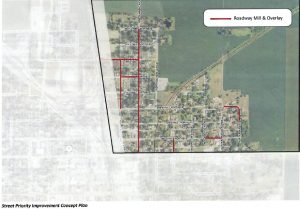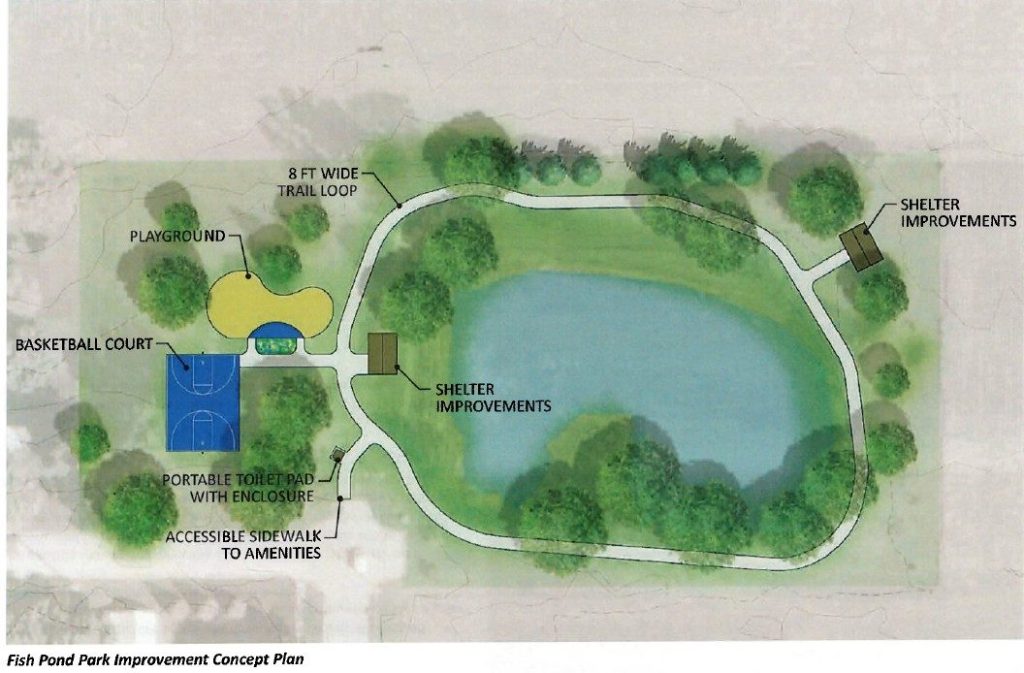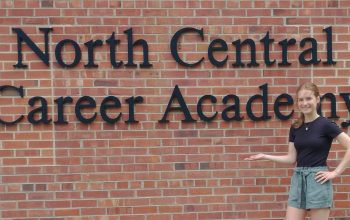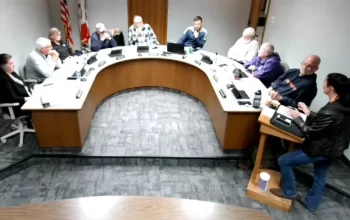By Edward Lynn,
Editor
EAGLE GROVE, Iowa — A bold plan to reimagine Eagle Grove’s northeast neighborhood—blending flood prevention, safe walkability, improved housing, and modern park facilities—moved one step closer to reality on May 19, as the city council unanimously approved a $1.75 million grant application to the state’s newly launched Community Development Block Grant (CDBG) Neighborhood Revitalization Program.
The city’s proposal, totaling an estimated $2.67 million, is one of only three statewide invited to advance from concept to full application. If approved, Eagle Grove would be eligible for up to two-thirds of the available funding, with the state intending to support two of the three projects in full.
“They’re going to fund $3 million worth of these projects, so two of the three communities will be funded by and large in full,” said City Administrator Bryce Davis. “We definitely want to be a part of that 66%.”

Click to enlarge.
The revitalization plan aims to address one of the city’s oldest and most flood-prone neighborhoods, with an approach that improves quality of life and stimulates further private investment. Projects include 18 blocks of street resurfacing, green stormwater infrastructure, sidewalk installation, housing rehabilitation, tree removal, and comprehensive upgrades to Fish Pond Park.
“This is a high-level plan in terms of engineering acumen,” Davis told the council. “Once funding comes available, then we will deep dive and actually do construction plans.”

Click to enlarge.
At the heart of the storm-water strategy is a shift toward sustainability. The neighborhood has long struggled with flash flooding, including incidents that stalled vehicles—including a police cruiser. “I think we even lost a police car in there one time—at least the motor anyway,” recalled Councilmember Wally Lorenzen.
To mitigate future flooding, the city plans to implement “green infrastructure,” including tree trenches, bioswales, and permeable areas designed to temporarily retain water and reduce the hydraulic burden on the storm sewer system.
Connectivity and walkability also play a major role in the plan. Sidewalks would be added along North Wright Avenue and Northeast Fourth Street to create safer pedestrian routes between Fish Pond Park, the aquatic center, Greenwood Park, and local daycare facilities. These routes would integrate with a broader citywide sidewalk loop now under consideration.
“We’re looking at creating a loop of walkability,” Davis said, describing a future five-mile sidewalk circuit connecting major destinations like schools, parks, and the public library.
At Fish Pond Park, which sits within the project area, the city proposes a new ADA-accessible walking trail around the pond, updated shelters, a new playground, and a full basketball court. “We are looking at a new trail that circumnavigates the pond… a new basketball court with two new hoops… and a new playground area with equipment,” Davis explained.

Housing rehabilitation and nuisance abatement are also included in the plan, along with the removal of ash trees as part of the city’s ongoing response to invasive pests.
The total project cost is estimated at $2,666,570, which includes:
-
Construction estimates
-
Professional design fees (12%)
-
Soft costs such as geotechnical testing, permitting, and topography (20%)
-
Contingencies (20%)
The city is requesting the full $1.75 million allowed under the CDBG program. The remaining $916,570 in local match has been partially offset by community contributions:
-
Prestage Foods of Iowa has pledged $100,000
-
Eagle Grove Community Development Corporation has committed $10,000
-
Additional pledges are expected from the utility board and a private donor
That brings the city’s required commitment down to approximately $706,000, which would be financed over four years using Local Option Sales Tax (LOST) revenues. “We would go and get a construction loan for the project, and we would pay it over the four years,” Davis said.
The neighborhood’s eligibility is among the highest in the state, with 75.16% of residents qualifying as low-to-moderate income (LMI)—far exceeding the 51% threshold and boosting the city’s application score.
In an interview with The Eagle Tuesday morning, Administrator Davis emphasized the broad and long-term collaboration behind the plan. “Mayor Boyd, the City Council, the Utility Board, and various community partners have come together to really develop an incredible opportunity for our town,” Davis said. “They continue to address the challenges that our community faces and provide the resources for the City’s dedicated Public Works and Water Department personnel to implement those objectives.”
Davis explained that the project is a natural continuation of more than a decade of targeted investment in the same neighborhood, including a $1.2 million investment in water and sewer infrastructure in 2019—half of which was funded through the CDBG program. He also cited a $500,000 housing sustainability grant used in recent years to preserve single-family homes in the district.
“Fortunately, the State of Iowa has created this incredible program that allows the City to expand on its past projects in this neighborhood to continue modernizing its infrastructure while allowing other local funds to also continue investing in infrastructure and projects throughout the community,” Davis said.
As part of laying the groundwork for this grand vision, the City Council passed two accompanying resolutions Monday: Resolution 2025-57 formally committing the matching funds and Resolution 2025-58 authorizing submission of the application. The grant will be submitted to the Iowa Economic Development Authority before the May 31 deadline.
If awarded, the city would have up to four years to complete the work. While the project could be phased, Davis said most of it could be accomplished in a single construction season.
“Mill and overlay for 18 blocks can be done in a week,” Davis said. “This doesn’t have to happen right away. We have time to plan and do it right.”
The city hopes the effort will not only improve infrastructure, but also spark renewed pride and reinvestment in the neighborhood. “The state likes to see that these projects are catalysts,” Davis said. “They like to see further investment above and beyond their own dollars, so that there’s a multiplier effect.”







